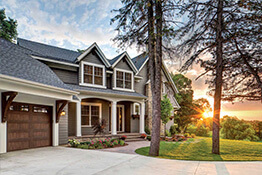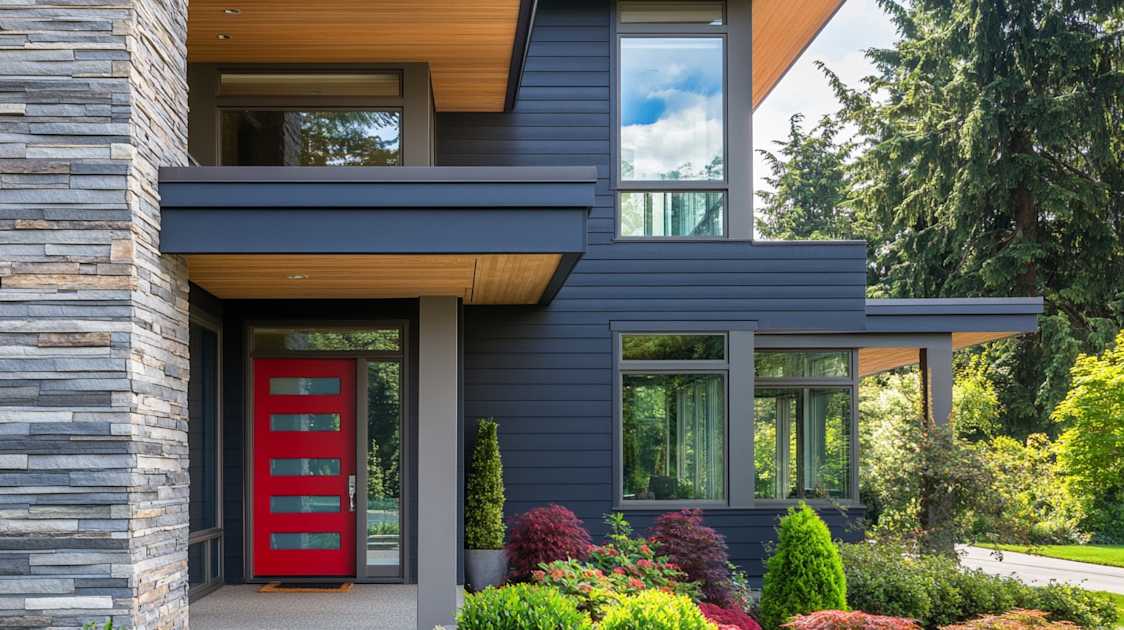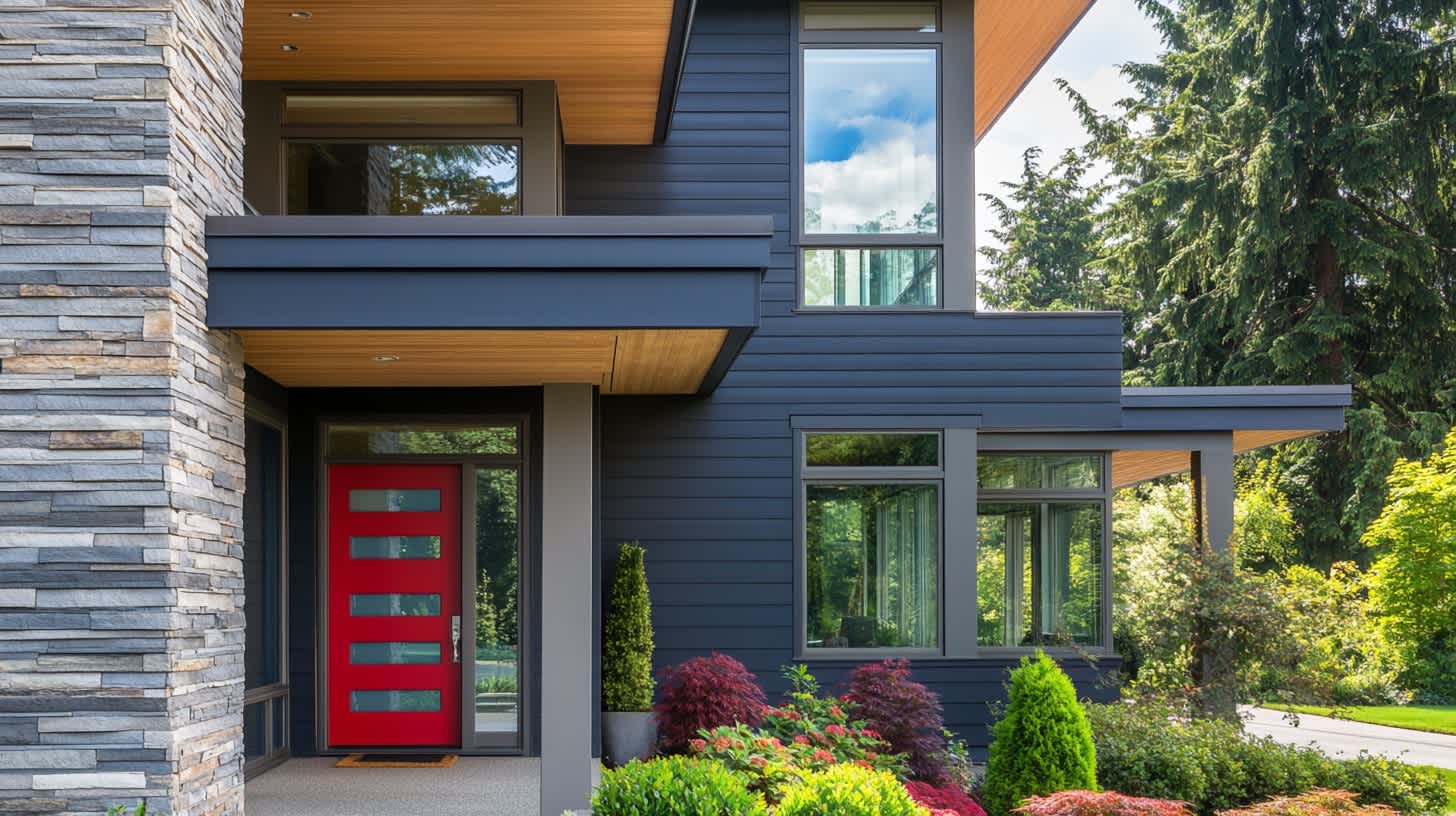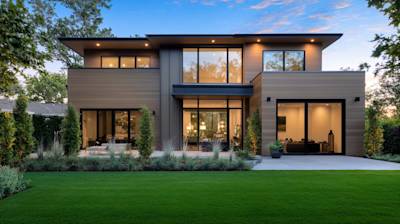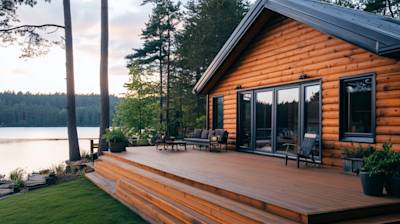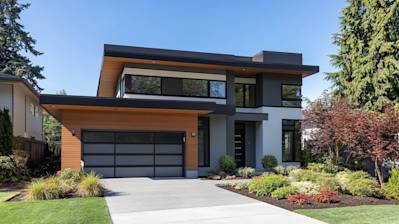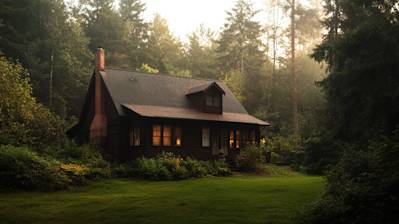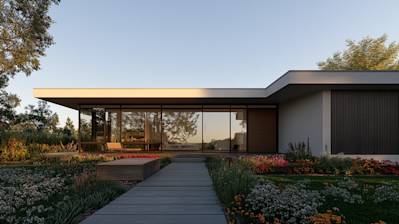If you've ever seen a traditional New England home, you've likely marveled at the classic beauty of the exterior. There's a good chance that the house was adorned with clapboard siding, also commonly known as bevel siding, lap siding, or weatherboard. Clapboard siding is a popular choice among homeowners and contractors for its timeless appeal and superior functionality. Let's delve into everything you need to know about clapboard siding.
Understanding Clapboard Siding
Clapboard siding is a traditional, quintessentially American style of wood siding. Named from the Dutch word 'klappen,' meaning 'to split,' the term alludes to the way this siding is typically made— by splitting or "clapping" logs into tapered boards.
The sequential arrangement of these horizontally placed boards produces a decorative, overlapping pattern characteristic of this iconic siding type. This overlapping system also serves to wick water away from the home, providing an efficient moisture barrier.
Characteristics of Clapboard Siding
This multi-purpose siding material comes with a variety of features that give it an edge in the siding materials market.
Diverse Material Choices
Although traditionally manufactured using wood, clapboard siding these days comes in various materials such as:
- Genuine wood (pine, cedar, redwood, etc.)
- Engineered wood
- Fiber cement
- Vinyl
- Aluminum
Each material offers unique advantages in terms of durability, maintenance, and aesthetic appeal.
Variety in Texture and Color
Clapboard siding is available in a wide range of textures, mimicking everything from rustic unfinished wood to sleek, modern finishes. The vast array of color options also makes it easy to customize the look of your home to suite your personal taste and style.
Installation Options
Clapboard siding can be installed in two different styles - Traditional overlap and modern flush-mount. Overlapping is the most common style and involves a slight overlap of each board onto the other. The flush mounting style, on the other hand, creates a smooth, flat surface for a more contemporary look.
How to Install Clapboard Siding
Top installation performance of clapboard siding is crucial for both its aesthetic appeal and long-term durability. Here's a rundown on the basic procedure:
-
Preparation: This step involves removing old siding, if any, and preparing the wall surfaces. It's recommended to add a layer of sheathing or house wrap for added insulation and protection.
-
Layout: It's essential to plan out the layout before nailing down the boards. Start from the bottom and keep a chalk line handy to ensure a level installation.
-
Installation: Install the first row of clapboards, ensuring that they overlap the starter strip. Each subsequent row should overlap the previous one.
-
Cutting and Fitting: Precision cuts around windows, doors and corners are crucial. Use a fine-toothed saw to achieve exact measurements.
-
Securing and Sealing: Once all the clapboards are fitted neatly, secure them using galvanized nails. Caulk the boards around windows and doors to prevent water infiltration.
Remember that, as with all home renovation projects, it's best to hire a professional installer if you're unsure about doing it yourself.
Clapboard Siding Maintenance Tips
Clapboard siding maintenance, particularly for wood, is essential to keep the siding in pristine condition and extend its lifespan:
-
Regular Cleaning: Use a soft brush or pressure washer to eliminate dirt and mildew.
-
Painting or Staining: Wood siding requires regular painting or staining to enhance resistance to weather elements.
-
Sealing: Keep a close eye on the sealant condition. Re-caulk when you spot any signs of deterioration or damage.
-
Insect Control: Termites and other insects can damage wood siding. Regular insect control treatments are recommended.
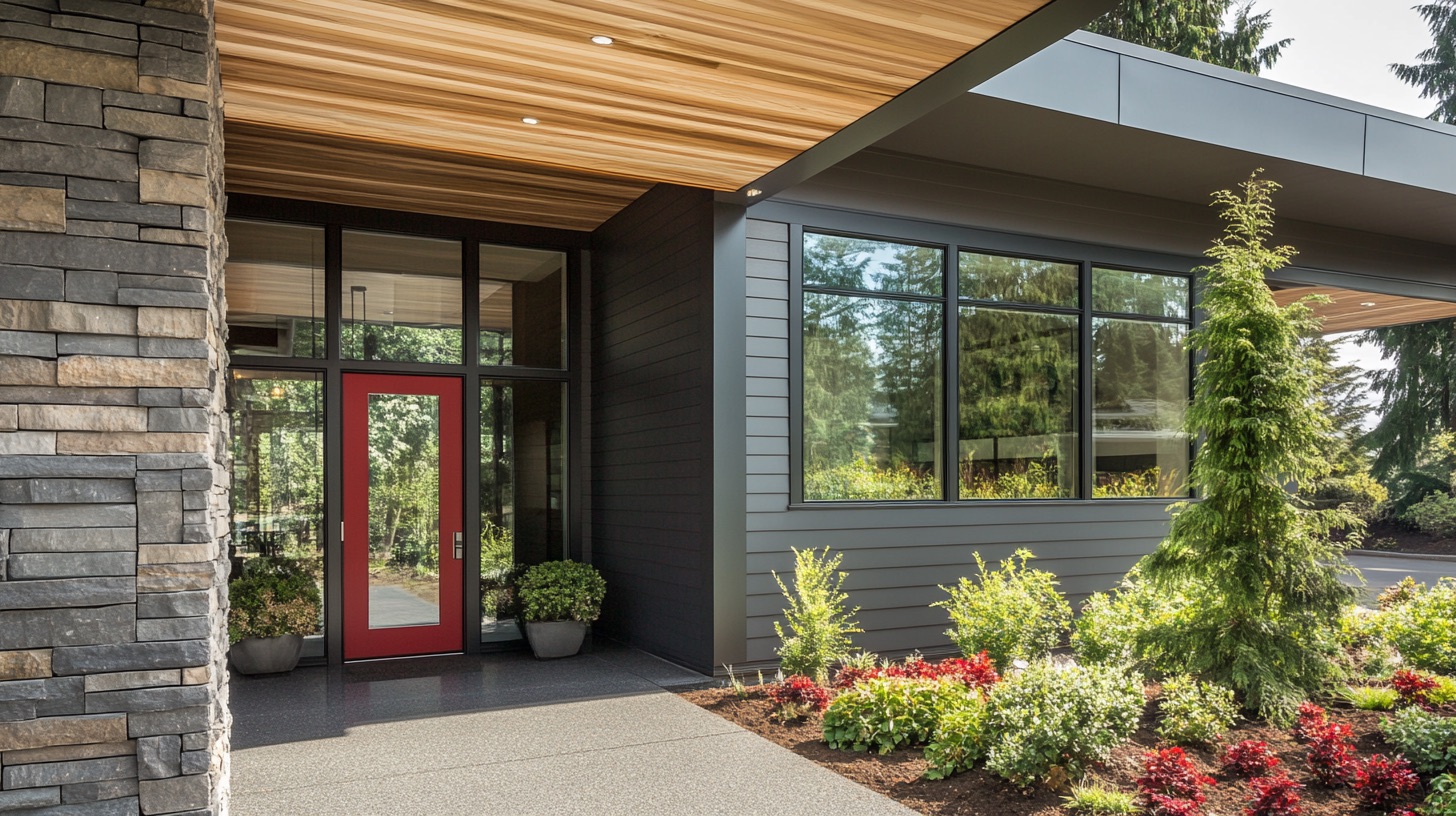
Frequently Asked Questions about Clapboard Siding
How is Clapboard Siding Installed?
The installation process of clapboard siding includes several steps. Initially, the installers prepare the wall surface and apply a moisture barrier. Once the wall is prepared, they begin applying the clapboards. These are installed horizontally, one board at a time from the bottom. Each higher board overlaps the one beneath it to shed water effectively. Nail guns are generally used to affix the boards to the wall.
Can Clapboard Siding Be Painted?
Yes, clapboard siding can be painted! And in fact, it's actually a popular choice for many homeowners who enjoy changing color schemes every few years. It's essential to prime the wood before painting to protect it from moisture and sun damage. Additionally, high-quality, weather-resistant paint is typically recommended for the best longevity.
How Long Does Clapboard Siding Last?
With proper installation and maintenance, wooden clapboard siding can last between 20 to 40 years. However, it's crucial to note that the lifespan of the siding is heavily dependent on factors like local weather conditions, care, maintenance, and the type of wood used. Fiber-cement and vinyl clapboard siding options offer even longer lifespans, with some manufacturers even offering 50-year warranties.
How do You Maintain Clapboard Siding?
To ensure your clapboard siding retains its aesthetics and functionality, it must be properly maintained. This includes repainting the siding every 5-7 years, cleaning off any mildew or algae annually, and promptly replacing any cracked or damaged clapboards. It's also important to keep any bushes or trees near the siding trimmed to avoid moisture build-up.
Is Clapboard Siding Energy Efficient?
Clapboard siding is considered to be quite energy-efficient as wood has natural insulating properties. It helps in maintaining indoor temperatures by reducing the transfer of heat and cold through the walls. However, the efficiency can be improved more significantly through the addition of foam insulation between the wall and the siding during installation.
What Styles and Options are Available for Clapboard Siding?
Clapboard siding offers a wealth of style options and finishes. From the rustic appeal of rough-cut cedar to the smooth, modern elegance of pine or spruce, you can achieve a wide variety of looks. Then, there are different sizing options, varying from wide to narrow, allowing you to create different visual effects. In addition, different finishes, such as paint, stain, or clear sealant, enable further customization.
Can Clapboard Siding be Used on Every House Type?
Yes, clapboard siding is extremely versatile and can be tastefully installed on almost any house type. This includes Colonial, Cape Cod, Cottage, Victorian, Ranch, or Modern style homes, among others. The siding's simple, horizontal pattern looks both elegant and homely, enhancing the visual appeal of numerous architectural styles.
Does Clapboard Siding Increase Home Value?
Yes! Clapboard siding can increase your home's value due to its aesthetic appeal and durability. Prospective buyers are often drawn to homes with clapboard siding because of its traditional, timeless look and the fact that it endorses well-kept home maintenance.
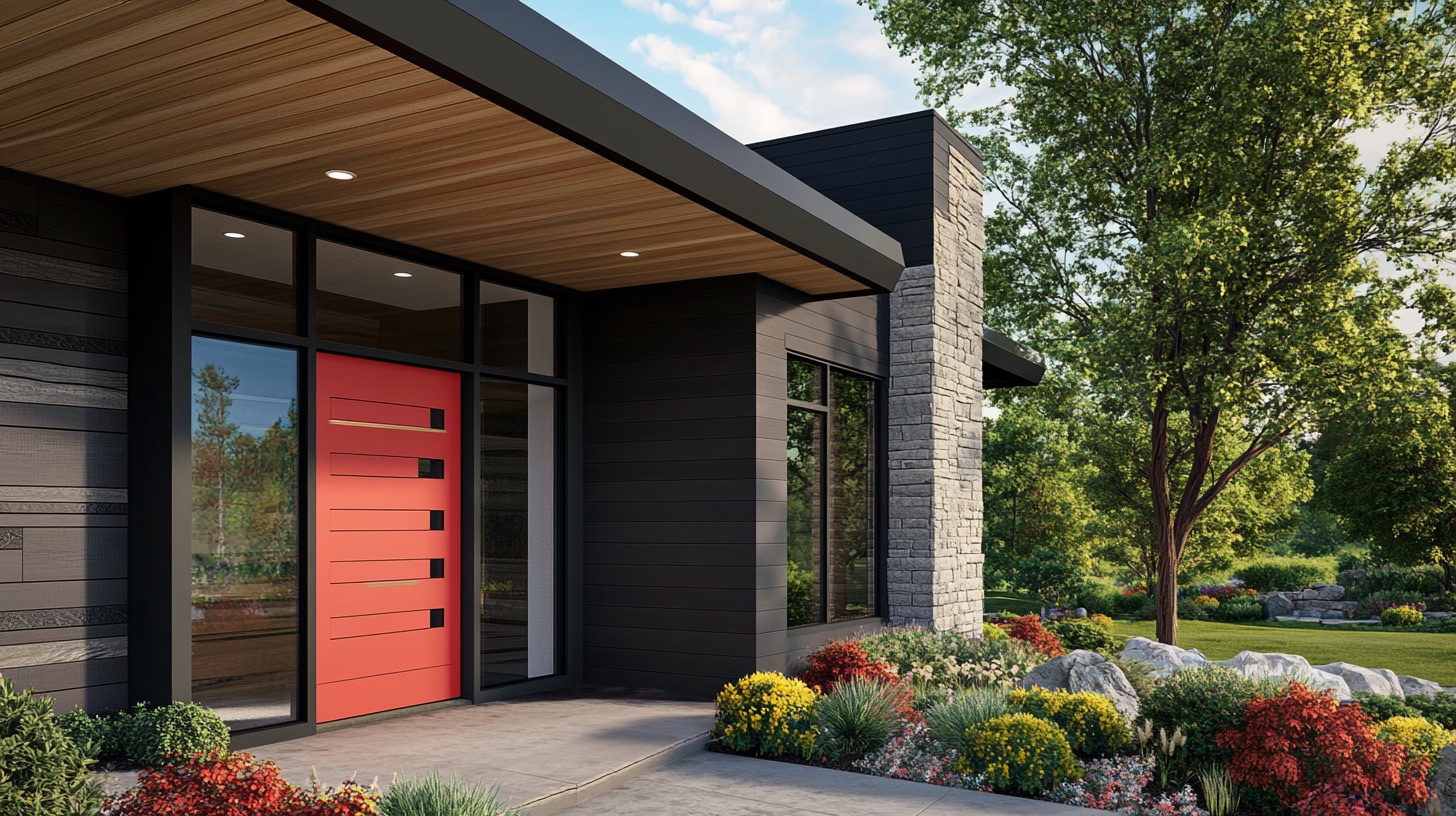
Pros of Clapboard Siding
Natural Appeal and Beauty
Material
Clapboard siding, also commonly known as wood siding, obtains its beauty from the natural materials it is derived from. This gives a timeless, rustic, and authentic look that is quite appealing to many homeowners.
Versatility in Appearance
In addition to its natural beauty, clapboard's versatility stands out. The siding can be painted or stained in a massive range of colors and shades, allowing homeowners to customize their homes' exteriors according to personal preferences.
Range of Textures
Wood siding comes in a variety of textures. It can be rough and rustic or smooth and modern. This flexibility allows clapboard siding to fit any home style, ranging from traditional to contemporary.
Climate Impact
Natural Insulator
Being a natural insulator, wood siding provides sufficient thermal insulation for your home, thereby reducing heating and cooling costs. This makes it an excellent option for those residing in extreme climates.
Environmentally Friendly
Renewable Resource
Wood siding is made from renewable resources, unlike other siding materials such as plastic or aluminum. Additionally, the production process of wood siding releases less carbon dioxide compared to other materials, making it an environmentally friendly option.
Energy Efficiency
As mentioned earlier, wood’s insulating properties can aid in maintaining your home's temperature, reducing energy usage as a result. This points towards a reduced carbon footprint.
Cons of Clapboard Siding
Maintenance
High Maintenance
Wood siding requires constant maintenance. The wood doesn’t just require occasional repairs but also regular staining or painting to prevent it from drying out, losing its color, or cracking.
Damage Risks
Wood siding is susceptible to damage from moisture, insects, and rodents. If not well maintained, this can cause serious structural damage over time.
Limited Life Span
Even with proper and constant maintenance, clapboard siding commonly lasts somewhere between 10 to 15 years. Therefore, it is not the most enduring siding option on the market.
Cost
Initial Investment
Clapboard siding is relatively more expensive to install compared to other siding options such as vinyl or aluminum. This high initial cost can be a drawback for some homeowners.
Ongoing Maintenance Cost
Due to its propensity towards maintenance needs, this type of siding may end up costing more in the long-run, particularly if you rely on professional assistance for maintenance tasks and treatments.
Environmental Impact
Deforestation Concern
Though it is a renewable resource, there are concerns associated with deforestation and the over-harvesting of trees. It's crucial for homeowners to ensure they are buying from suppliers who practice responsible and sustainable harvesting methods.
Use of Toxic Treatments
To maintain wood siding and protect it from insects and rot, it sometimes needs to be treated with chemicals, which can be harmful to the environment.
Fire Risk
Increased Fire Hazard
Wood is inherently combustible, so houses with wood siding are at a higher risk in case of a fire. Some regions with a high risk of wildfires may even restrict or discourage wood siding usage.
Therefore, the potential homeowners need to consider these pros and cons and weigh the aesthetic appeal and environmental friendliness of clapboard siding against its relatively high cost and maintenance demands.

Myths and Misconceptions about Clapboard Siding
In the world of home exteriors, clapboard siding stands as a timeless choice that offers natural beauty and a unique curb appeal. However, a variety of misconceptions and myths have grown around it over the years. Let's clear the air and crack open these clapboard siding fallacies one at a time.
Myth 1: Clapboard Siding Doesn't Last Long
A prevalent myth about clapboard siding is that compared to other siding materials like vinyl or fiber cement, it does not last long. However, this is a common fallacy.
Fact
When properly installed and maintained, clapboard siding can last for several decades. Cedar, a popular wood for clapboard siding, is known for its longevity and resistance to insects and rot. The life expectancy is even longer when the wood is properly painted or stained to protect it from the elements.
Myth 2: Clapboard Siding Requires Constant Maintenance
Many homeowners steer away from clapboard siding because of the belief that it requires constant maintenance as compared to other siding materials.
Fact
While it is true that clapboard siding requires more maintenance than say, vinyl siding, the claim of constant upkeep is greatly exaggerated. Yes, you will need to re-paint or re-stain the siding every few years, but much of the maintenance simply involves regular cleaning and checking for damages from time to time.
Myth 3: Clapboard Siding Can't Stand Up to Harsh Weather
Another common misconception is that clapboard siding cannot hold up to extreme weather conditions, leading many to steer clear of this siding option.
Fact
Contrary to popular opinion, clapboard siding can effectively withstand extreme weather conditions if properly installed and treated. Its overlapping design helps shed water efficiently, protecting the home from damaging moisture. Also, it is inherently insulating, providing energy efficiency in both hot and cold weather.
Myth 4: Clapboard Siding is Not Environmentally Friendly
In the eco-conscious world we live in, many homeowners are concerned about the environmental footprint of their building materials. And often, clapboard siding is mistakenly considered as not being environmentally friendly.
Fact
Clapboard siding, especially if made from sustainably sourced wood, can be one of the most environmentally friendly siding options available. As wood is a renewable resource, it has a lesser environmental impact compared to synthetic materials like vinyl or metal sidings.
Myth 5: All Clapboard Siding Looks the Same
Some people tend to think that all clapboard siding looks the same, resulting in a monotonous or outdated look.
Fact
While traditional clapboard siding has a characteristic horizontal pattern, it can come in many different styles, shapes, and materials. From different types of wood to varying grain patterns, there's a wealth of variety available. Plus, it can be painted or stained in nearly any color, providing endless customization possibilities.
Understanding these misconceptions helps homeowners make more informed decisions when choosing the right siding material for their home. Clapboard siding, with its unique appeal, durability, and versatility, remains a fantastic option for many homeowners.
Summary
So, we’ve dived deep into the world of clapboard siding – what makes it unique and how it enhances your home’s aesthetic appeal and overall protection. This type of siding has stood the test of time, adding charm to homes across the country. Moreover, it’s the kind of choice that gives you the best of both worlds – beautiful design and durability. Sure, maintenance is required, but for that unique, traditional look, clapboard siding is well worth it.
On the lifesaving front, we have also found that clapboard siding is an ace at protecting your home from harsh environmental conditions. The overlap design ensures efficient water runoff, reducing any chances of mold or structural damage. Whether you’re going with traditional wood or deciding on more modern materials like vinyl or fiber cement, you can trust that clapboard siding will have your back, or well, your home’s exterior walls.
Last but not least, it's worth wrapping up by emphasizing the versatility in customization that comes with choosing clapboard siding. It’s not a one-size-fits-all deal. Instead, clapboard siding allows you and your home to shine through with a range of color, finish, and material options. Home improvement is all about personalizing your space to suit your taste, and clapboard siding unquestionably falls in line with this goal. From traditional homes to modern minimalistic designs, clapboard siding is the stylish, long-lasting choice that continues to impress homeowners alike.
About US Quality Construction of Columbus
US Quality Construction of Columbus is a trusted, homegrown construction company based right in the heart of Columbus, OH. Over the years, we've become synonymous with high-quality construction, attention to fine detailing, and unyielding performance standards. We're not just builders - we're your Columbus neighbors who are committed to creating safe, beautiful environments where memories are built. Our skilled, approachable team is known for bringing their craftsmanship and Columbus know-how to every project, big or small. We're proud to keep contributing to the city that we love and call home.
Tags: wood siding, exterior design, home renovation,
